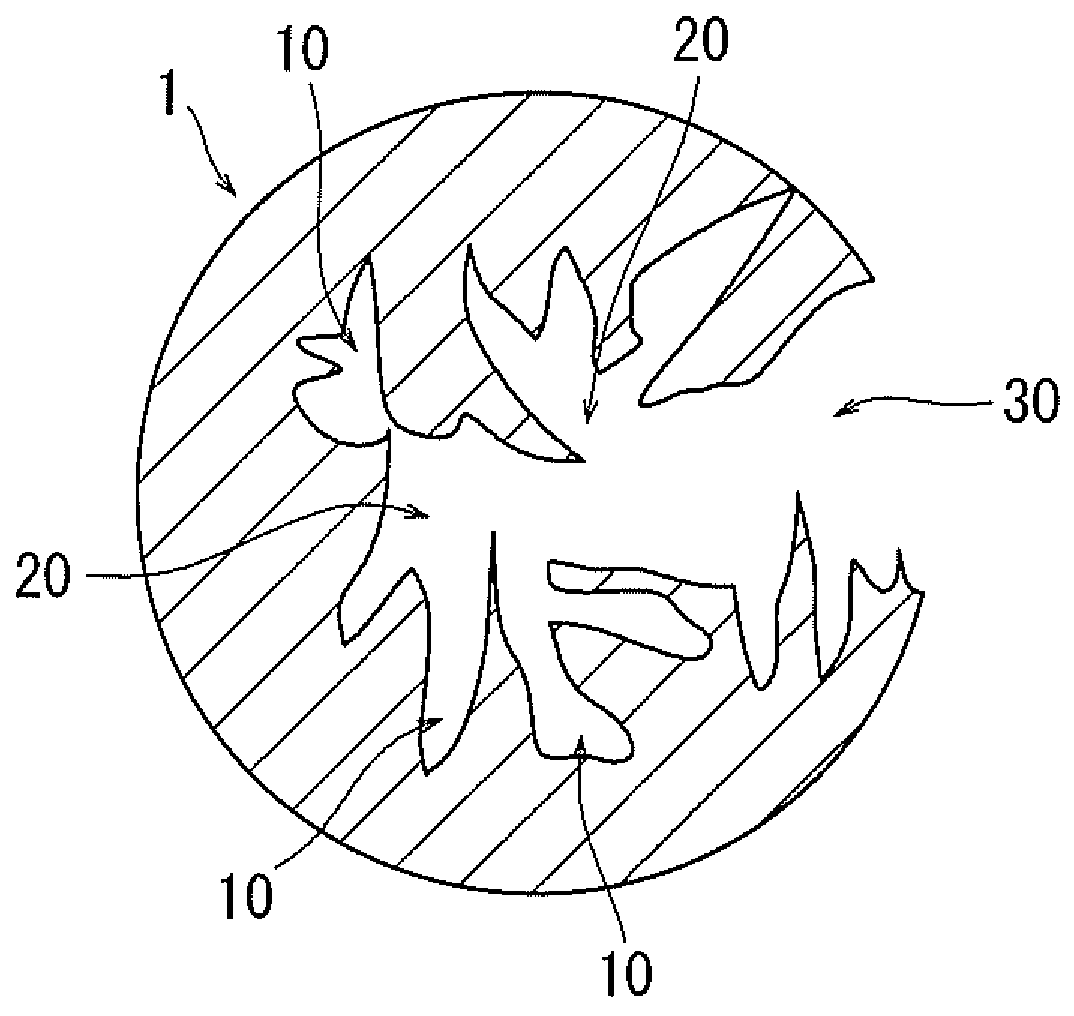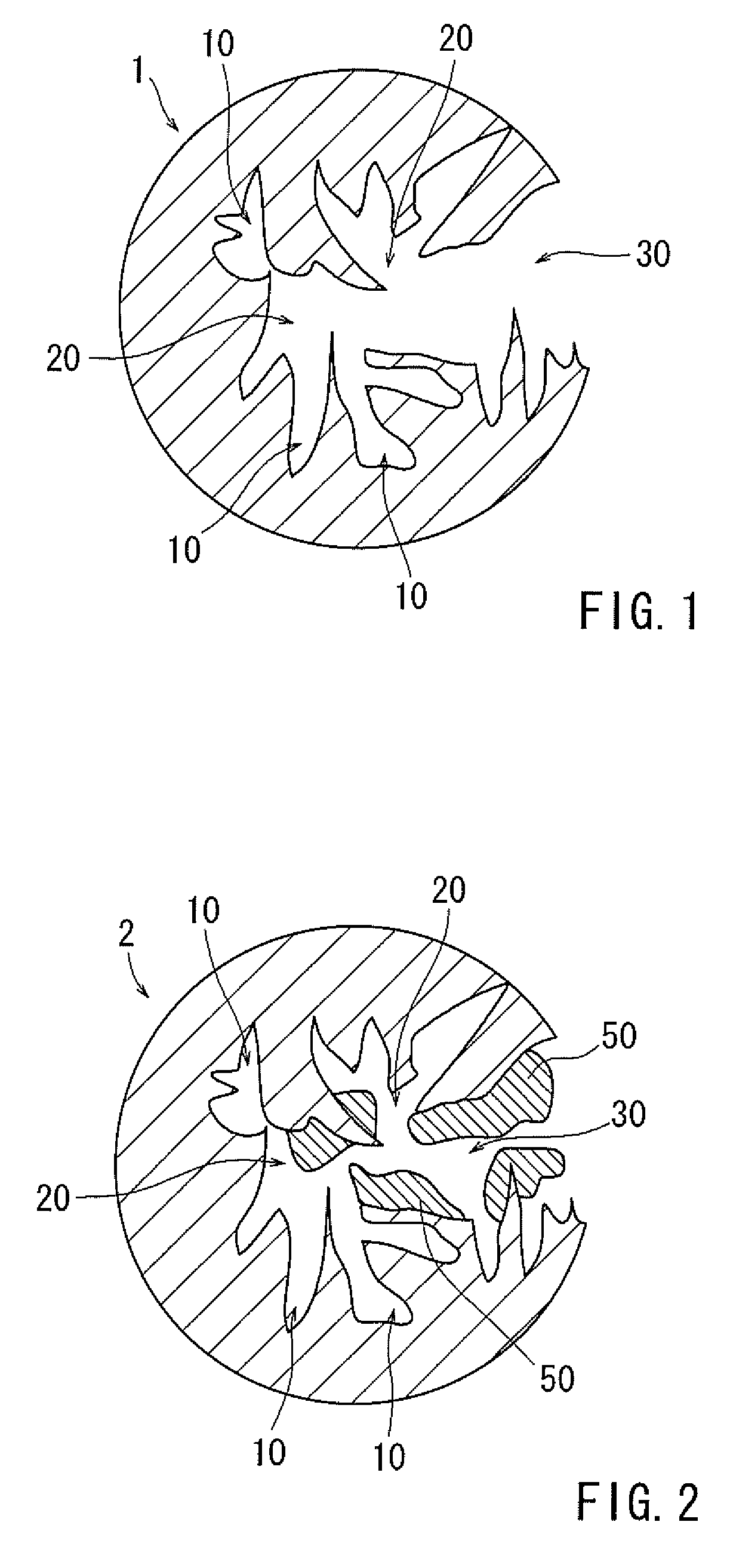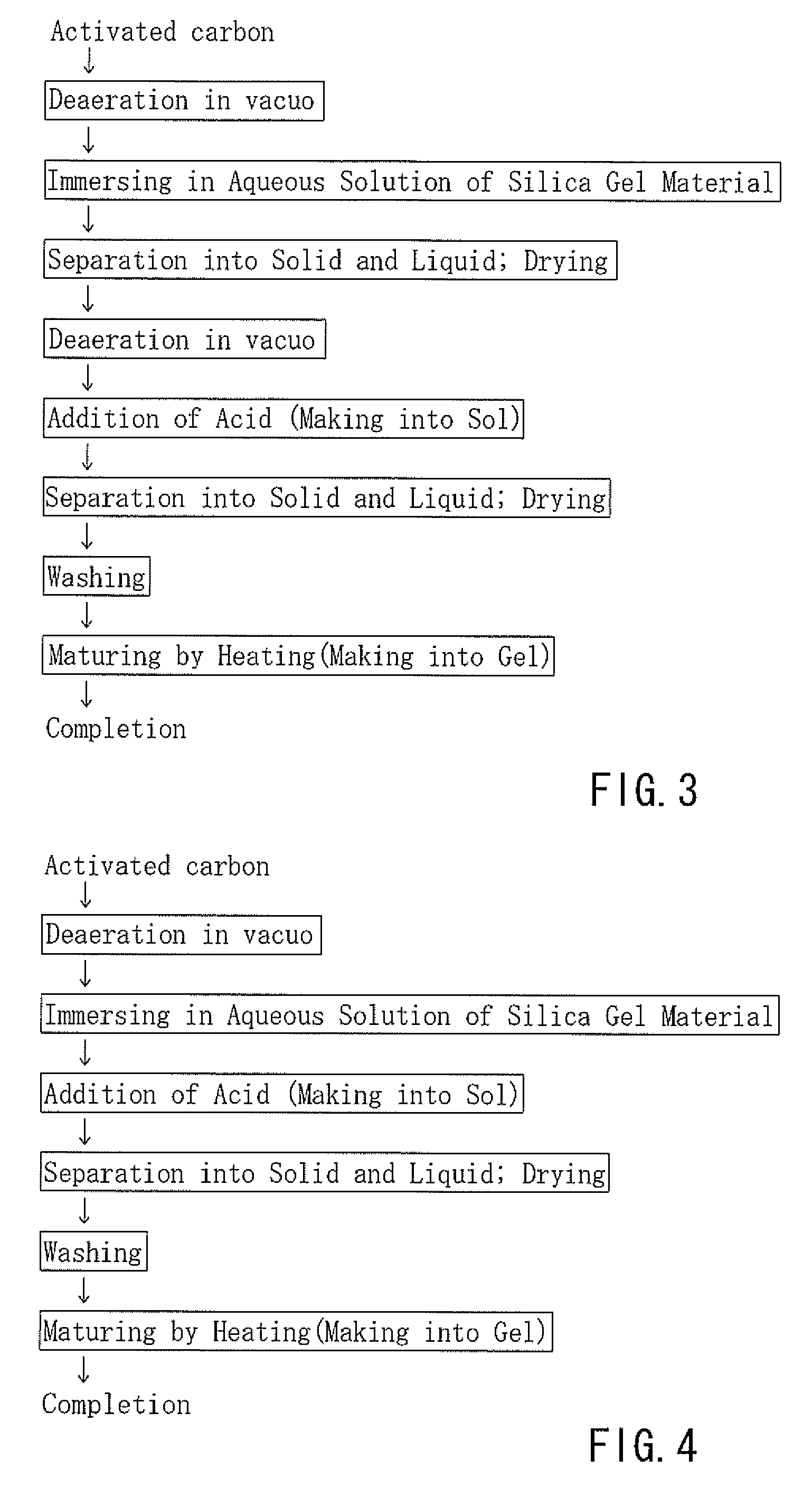Adsorbent and method for manufacturing the same
a technology of adsorbent and a manufacturing method, which is applied in the field of adsorbent, can solve the problems of air pollution, low hardness, and difficulty in controlling the pore diameter, and achieve the effects of easy imprégnation, shortening the immersion time, and simplifying the manufacturing method
- Summary
- Abstract
- Description
- Claims
- Application Information
AI Technical Summary
Benefits of technology
Problems solved by technology
Method used
Image
Examples
modified embodiment
[0104]In the above-mentioned third manufacturing method, the positive electrode 111 is provided separately from the activated carbon 1. However, the embodiment is not limited thereto, the activated carbon itself may be made into a positive electrode. For example, a conductive wire may be directly connected to a product where activated carbon particles are made into granules in a predetermined shape or to the activated carbon in a predetermined shape. When the activated carbon (which is in a predetermined shape or is made into granules of a predetermine shape) is used as the positive electrode, the frame wall 115 is not necessary. Alternatively, a conductive wire may be directly connected to the activated carbon filled in a housing container.
[0105]In the third manufacturing method, although the electrodes 111, 112 and the water flow are provided in a longitudinal direction, as shown in FIG. 8, the electrodes 111, 112 and the water flow may also be provided in a transverse direction. ...
examples
[0110]
[0111]BAX 1500 (activated carbon A), which is a wood-type activated carbon activated with phosphoric acid, of Mead Westvaco and granular Shirasagi KL (activated carbon B), which is a wood-type activated carbon activated by KOH, of Nippon Enviro Chemicals, were used as activated carbons. The pore diameter distributions of the activated carbon A and the activated carbon B are shown in FIG. 13, and various physical properties of the activated carbon A and the activated carbon B are shown in Table 3. It is apparent from FIG. 13 that many mesopores are present in both of the activated carbon A and the activated carbon B. It is also noted from Table 3 that micropore volume is bigger in the activated carbon A than in the activated carbon B. Specific surface area was measured by an N2 adsorption method and a filling density was measured by a particle filling method. In both of the activated carbon A and the activated carbon B, a particle size was limited within the range between 0.075...
PUM
| Property | Measurement | Unit |
|---|---|---|
| pore size ratio | aaaaa | aaaaa |
| pore diameter | aaaaa | aaaaa |
| pore size | aaaaa | aaaaa |
Abstract
Description
Claims
Application Information
 Login to View More
Login to View More - R&D
- Intellectual Property
- Life Sciences
- Materials
- Tech Scout
- Unparalleled Data Quality
- Higher Quality Content
- 60% Fewer Hallucinations
Browse by: Latest US Patents, China's latest patents, Technical Efficacy Thesaurus, Application Domain, Technology Topic, Popular Technical Reports.
© 2025 PatSnap. All rights reserved.Legal|Privacy policy|Modern Slavery Act Transparency Statement|Sitemap|About US| Contact US: help@patsnap.com



